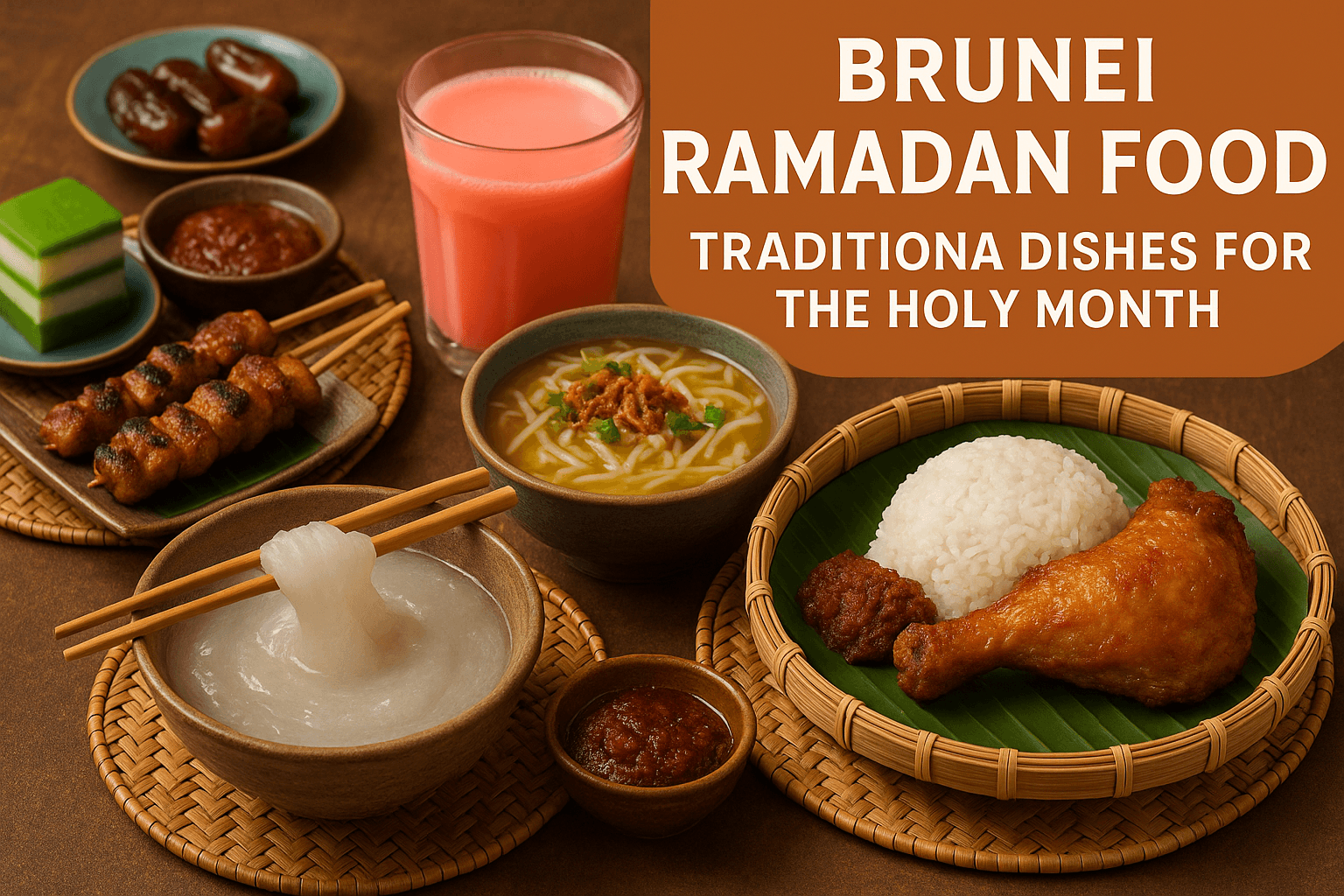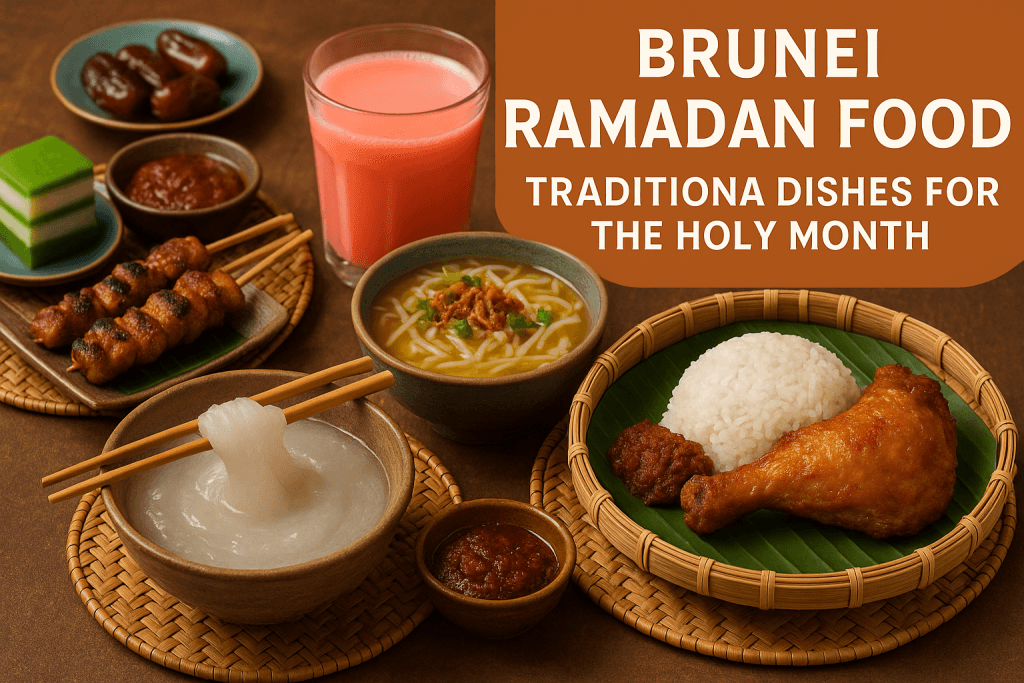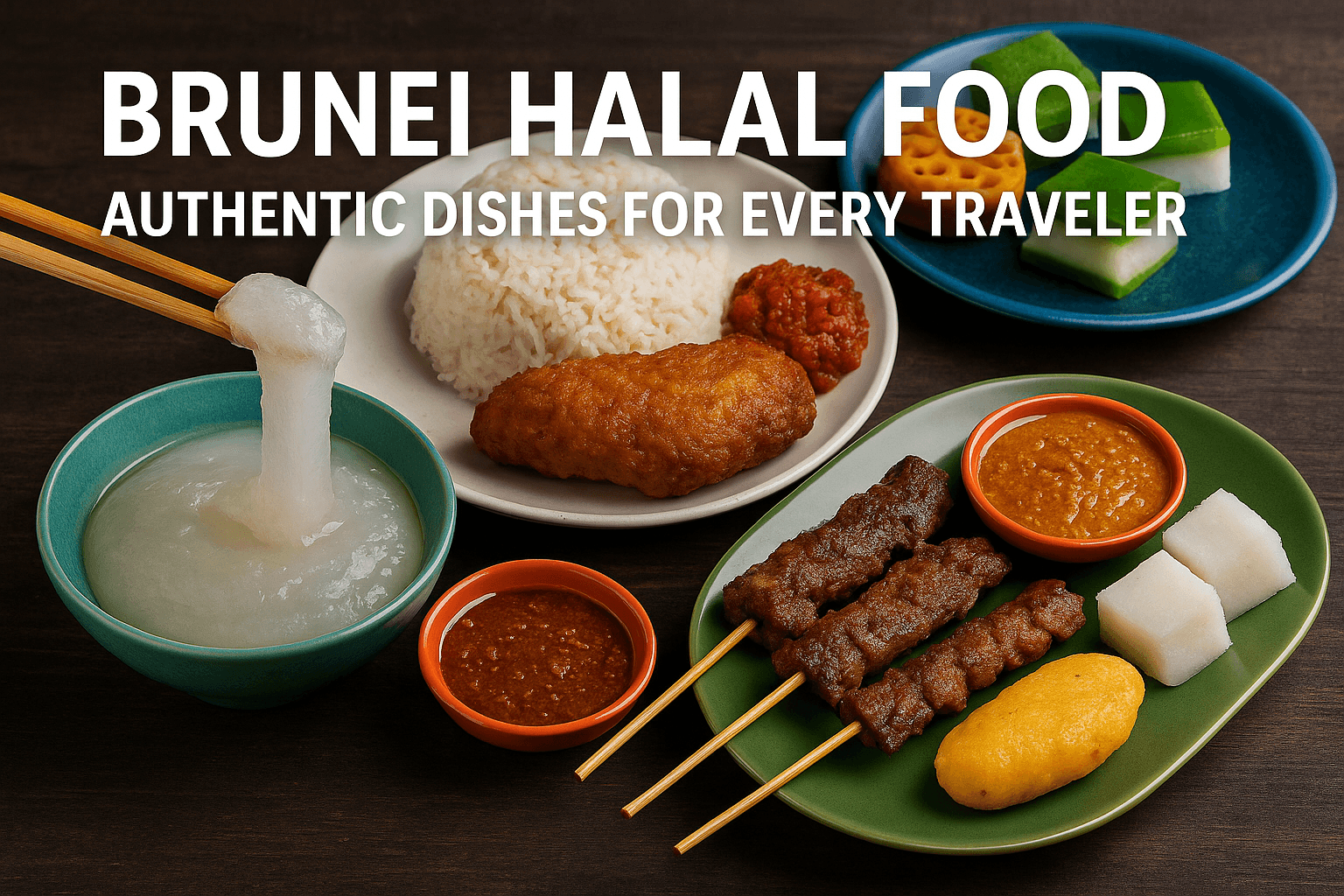Every year during the sacred month of Ramadan, Muslims around the world gather with family and community to break their fast at sunset. In Brunei, this spiritual and cultural practice is infused with unique culinary traditions that transform daily meals into celebrations of taste and togetherness. Brunei Ramadan Food: Traditional Dishes for the Holy Month reflects the nation’s rich Islamic heritage, regional flavors, and deep respect for communal dining.
Ramadan in Brunei is not only about abstaining from food and drink from dawn until dusk; it is about reflection, devotion, and gratitude. The meals served at Iftar (the breaking of the fast) and Sahur (the pre-dawn meal) become symbolic expressions of unity. Across Brunei’s mosques, markets, and households, dishes are prepared with care, blending indigenous Malay techniques with Islamic traditions and regional influences.
This article explores the significance, diversity, and flavors of Brunei Ramadan Food: Traditional Dishes for the Holy Month, offering an in-depth look at the culinary heritage that nourishes both the body and spirit during this sacred season.

The Role of Food During Ramadan in Brunei
Spiritual Significance
Food plays a vital role in fostering gratitude and mindfulness. When Muslims in Brunei break their fast with dates, fruits, and warm beverages, it symbolizes the Prophet Muhammad’s Sunnah and strengthens spiritual connection. Meals during Ramadan also emphasize moderation, encouraging believers to appreciate simplicity while honoring traditional recipes passed down for generations.
Community Bonding
During Ramadan evenings, mosques and community halls in Brunei host large Iftar gatherings. People from all walks of life share platters of rice, curries, and sweets. Brunei Ramadan Food: Traditional Dishes for the Holy Month thus becomes a bridge between neighbors, friends, and families.
Culinary Diversity
Because Brunei is geographically close to Malaysia, Indonesia, and the Philippines, its Ramadan cuisine incorporates regional flavors. Dishes such as satay, nasi katok, ambuyat, and sweet kueh varieties take center stage, making the fasting month a rich culinary celebration.
Essential Components of Brunei Ramadan Food
Dates and Fruits
Every Iftar begins with dates. Bruneians often serve fresh Medjool or Deglet Noor dates along with bananas, papayas, and rambutans. Fruits refresh the body, replenish energy, and provide natural sugars after long hours of fasting.
Drinks for Iftar
Beverages are integral to Brunei Ramadan Food: Traditional Dishes for the Holy Month. Popular options include:
Air Bandung: a pink rose-flavored milk drink.
Teh Tarik: the famous “pulled tea” with frothy sweetness.
Soya milk and sugarcane juice, both hydrating and energy-restoring.
Rice and Staples
Rice is the backbone of Brunei’s Ramadan meals. Whether in plain steamed form or infused with coconut milk, rice accompanies nearly every dish. Nasi Lemak, Nasi Katok, and various rice-based porridges are staples of Sahur and Iftar alike.
Soups and Curries
Comforting soups and richly spiced curries warm the stomach after fasting. From chicken curry to beef rendang, the slow-cooked flavors symbolize patience and care—values aligned with Ramadan.
Signature Brunei Ramadan Dishes
Ambuyat
Known as Brunei’s national dish, ambuyat is made from sago starch and eaten with bamboo sticks called chandas. Its sticky texture requires dipping into flavorful sauces such as sambal or sour mango relish. During Ramadan, ambuyat becomes a staple at Iftar gatherings, representing unity through shared dining.
Nasi Katok
A humble yet beloved dish, nasi katok consists of rice, fried chicken, and sambal. In the context of Brunei Ramadan Food: Traditional Dishes for the Holy Month, nasi katok embodies simplicity and affordability, yet its bold flavors make it indispensable.
Satay Skewers
Chicken or beef satay grilled over charcoal and served with peanut sauce are highly popular during Ramadan evenings. Families often purchase them from night markets, adding a smoky aroma to communal meals.
Soto Brunei
A noodle soup featuring beef broth, vermicelli noodles, herbs, and spices. Its light texture makes it perfect for Sahur, providing sustained energy without heaviness.
Kueh Varieties
No Bruneian Ramadan table is complete without sweet kueh. These colorful cakes and desserts symbolize festivity and joy:
Kueh Lapis: layered cake with vibrant colors.
Kueh Bingka: baked tapioca cake.
Kueh Dadar: pandan crepes filled with coconut and palm sugar.
Marketplaces and Ramadan Bazaars
Throughout Brunei, special Ramadan bazaars come alive at dusk. These night markets are vibrant spaces where locals buy freshly prepared Iftar meals. The stalls overflow with grilled meats, coconut-based desserts, spiced curries, and refreshing drinks.
These bazaars are more than just food markets; they are cultural landmarks where Brunei Ramadan Food: Traditional Dishes for the Holy Month shines brightest. They reflect Brunei’s hospitality, entrepreneurial spirit, and love for festive flavors.
Sahur Meals: Preparing for the Day Ahead
While Iftar receives much attention, Sahur meals are equally vital. Bruneians emphasize nutritious, filling foods that sustain energy throughout the day:
Oats and porridge enriched with milk and nuts.
Rice with light curry or grilled fish.
Herbal drinks and teas for hydration.
Sahur embodies discipline and preparation, reinforcing the spiritual value of mindfulness in eating.
Cultural Influences on Brunei Ramadan Cuisine
Malay Heritage
As a Malay Muslim-majority nation, Brunei shares many dishes with Malaysia and Indonesia. Coconut milk, pandan leaves, sambal, and turmeric are common flavorings in Ramadan meals.
Islamic Traditions
The practice of breaking fast with dates, avoiding waste, and sharing meals aligns Bruneian cuisine with broader Islamic teachings. Brunei Ramadan Food: Traditional Dishes for the Holy Month thus embodies faith as much as flavor.
Colonial and Regional Exchanges
Historical trade routes introduced spices, noodles, and cooking techniques from China, India, and the Middle East. These influences remain evident in modern Ramadan dishes such as mee goreng and curry puffs.
The Symbolism of Sharing
In Brunei, the act of sharing food during Ramadan represents compassion and humility. Families often prepare extra portions for neighbors or donate meals to mosques. Many charitable organizations host communal Iftar dinners, strengthening social bonds.
This communal generosity ensures that Brunei Ramadan Food: Traditional Dishes for the Holy Month is more than sustenance—it is a symbol of unity and gratitude.
Modern Adaptations and Innovations
While traditional dishes remain central, Brunei’s younger generation adds modern twists:
Health-conscious families prepare baked versions of fried foods.
Fusion desserts incorporate chocolate or matcha flavors into kueh.
International influences introduce pasta or pizza alongside local staples.
These adaptations ensure that Brunei Ramadan Food: Traditional Dishes for the Holy Month remains relevant to changing tastes while preserving cultural identity.
The Role of Hospitality and Etiquette
Serving guests with generosity is an honored tradition in Brunei. During Ramadan, households prepare extra dishes, ensuring no visitor leaves hungry. Hospitality etiquette includes:
Offering drinks immediately at Iftar.
Serving rice as the central element of every meal.
Ensuring balance between savory and sweet dishes.
This etiquette reinforces the values of kindness and respect that define Ramadan.
Health and Nutrition in Ramadan Foods
Brunei’s Ramadan dishes balance indulgence with nourishment. While fried snacks and sweet desserts are popular, families emphasize moderation and balance:
Incorporating fresh vegetables in curries.
Using herbs such as lemongrass and ginger for digestion.
Combining proteins, carbohydrates, and fruits for a complete meal.
This mindful approach ensures that Brunei Ramadan Food: Traditional Dishes for the Holy Month supports both spiritual and physical well-being.
Conclusion
Ramadan in Brunei is a profound experience where food plays a central role in expressing spirituality, culture, and community. The wide variety of dishes—from ambuyat and nasi katok to colorful kueh and refreshing drinks—showcase the nation’s heritage.
Brunei Ramadan Food: Traditional Dishes for the Holy Month is more than a collection of recipes. It is a reflection of faith, unity, and gratitude, blending flavors that comfort the body with traditions that inspire the soul. Each dish tells a story of resilience, generosity, and devotion, making the holy month a cherished period for Bruneians and visitors alike.


